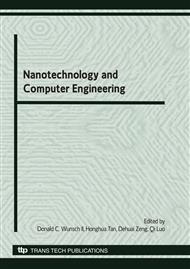p.866
p.872
p.878
p.882
p.887
p.893
p.900
p.905
p.911
The Transient Stability Preventive Control of Power System Based on RBF Neural Network
Abstract:
The transient stability preventive estimation and control is one of the most important tasks of the power system. The traditional time domain simulation method cannot meet the standard of on-line estimation because of its heavy computation burden. In this paper, we realize the on-line estimation of transient stability limits on critical lines of a power system using the favorable approximation ability of RBF network. We choose right samples by off-line count to train the RBF network in order to make the error satisfy demand. Preventive control direction and amount are determined based on first-order sensitivities of transient stability limits to generator outputs. The sensitivities are derived from partial derivatives of RBF network outputs to inputs. In the end, we take a practical power system for an example to demonstrate the efficiency of RBF network in estimation of the transient stability limit on critical lines and ability to provide preventive control strategy.
Info:
Periodical:
Pages:
887-892
Citation:
Online since:
June 2010
Authors:
Keywords:
Price:
Сopyright:
© 2010 Trans Tech Publications Ltd. All Rights Reserved
Share:
Citation:


